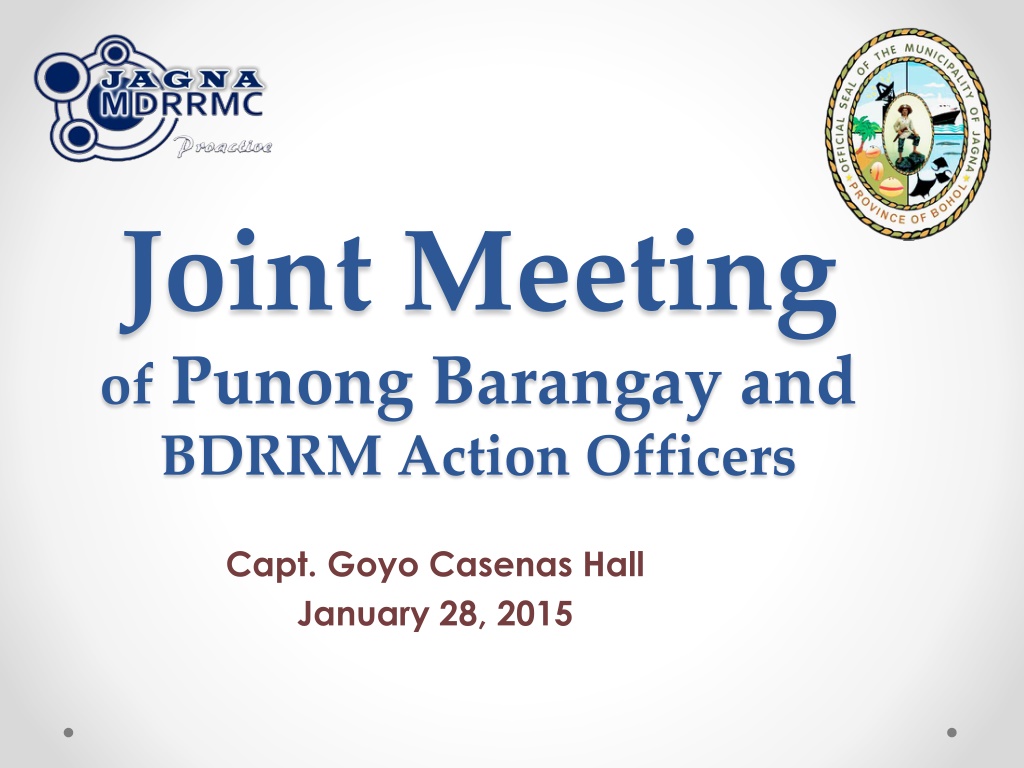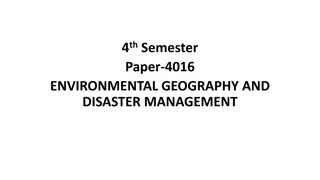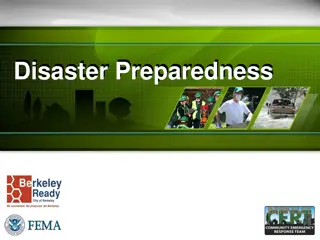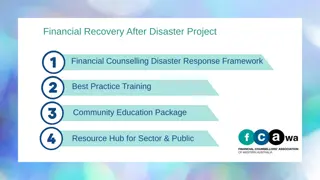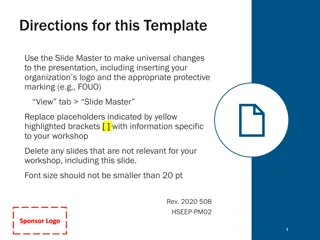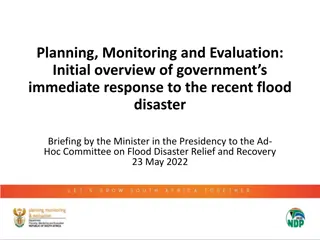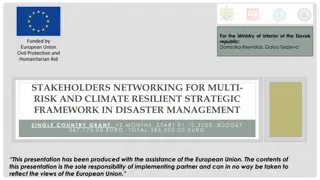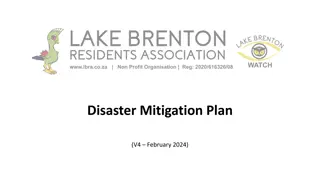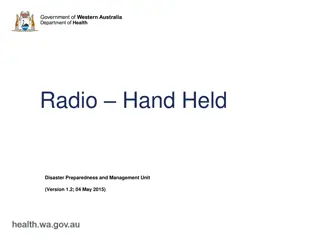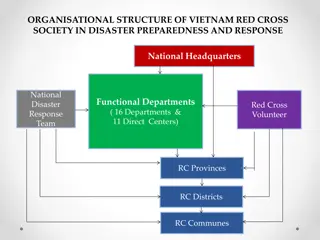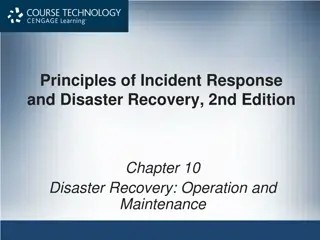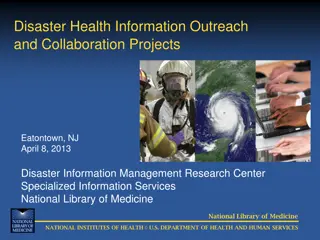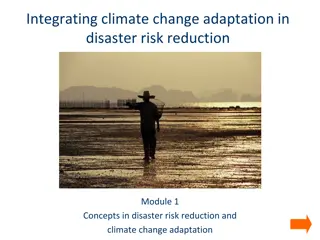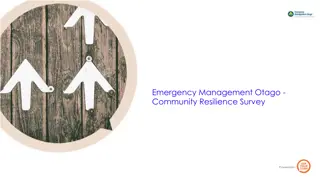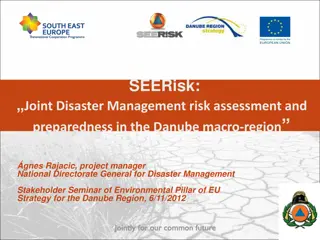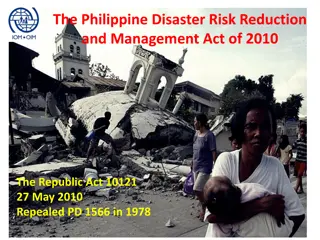Disaster Preparedness Meeting Agenda
The joint meeting of Punong Barangay and BDRRM Action Officers held on January 28, 2015, focused on various aspects of disaster preparedness including communication, evacuation, relief operations, assessment, and utilization of funds. The agenda covered issues such as pre-disaster activities, post-damage assessment, rehabilitation, and evaluation criteria. Key measures discussed included aiming for zero casualties, sustainability of services in evacuation centers, consolidation of search and rescue assets, and monitoring weather conditions.
Download Presentation

Please find below an Image/Link to download the presentation.
The content on the website is provided AS IS for your information and personal use only. It may not be sold, licensed, or shared on other websites without obtaining consent from the author.If you encounter any issues during the download, it is possible that the publisher has removed the file from their server.
You are allowed to download the files provided on this website for personal or commercial use, subject to the condition that they are used lawfully. All files are the property of their respective owners.
The content on the website is provided AS IS for your information and personal use only. It may not be sold, licensed, or shared on other websites without obtaining consent from the author.
E N D
Presentation Transcript
Joint Meeting of Punong Barangay and BDRRM Action Officers Capt. Goyo Casenas Hall January 28, 2015
Agenda: ISSUES AND CONCERNS Pre-Disaster ( Engr. Araneta) o Communication and Warning (text brigade/rekoreda) o Preparedness Activities (clearing of hazardous trees/attention to advisories) o Pre-emptive Evacuation and Transportation During Disaster ( Mam Nila) o Search and Rescue o Evacuation and Relief Operation o Security and Safety Post Damage Assessment ( Sir Mil) o Post Damage Assessment (Infra/Agriculture/Other Properties) Forms and signatories Manner of Submission of Reports o Retrieval Operation o Rehabilitation and Recovery Other Matters (Engr. Araneta) o Use of Quick Response Fund o Utilization Guidelines of LDRRM Fund o Financial Cash Assistance (Incident Report form brgy and proof of damage) o BDRRM Evaluation Criteria o Website Orientation/Group Chat/BDRRM Ipod o Criteria for Declaring State of Calamity o Barangay Evaluation (first 2 brgy) o Service Vehicle for Rescue o Bohol Earthquake Assistance Fund o Listahang Tubig
Checklist for Disaster Preparedness (Municipal) Available vehicles for pre-emptive evacuation Generator sets and its accessories for evacuation center Kitchen equipment and utensils for disaster command center Activation of Incident Command Center committees Available Damage Assessment Forms, log books, office supplies, etc. Available communication units and facilities Serviceable chainsaw, ropes, and other rescue equipment JEMRU vehicles and ambulances ready for emergency Reserved funds of P100,000 for mobilization and emergency purchases Emergency Contact No.s to members of MDRRMC, 33 BDRRM Action Officers, 33 barangay captains, Tarsier 117, PDILG, OCD 7, NDRRMC. Lists of LGU manpower for the operation and duty at Command Post Emergency equipment such as electric drill, jack hammer, steel cutter, etc. Packed relief goods ready for distribution Empty drums, containers, blankets, sleeping mats Rechargeable lamps, flashlights, extension wires,etc. Motor sirens, early warning devices, flood indicators, etc
Preparedness Measures 1. Aim for zero casualty and undertake pre-emptive evacuation. 2. Ensure sustainability of services in Evacuation Center (Water, Sanitation and Health (WASH), Health, Food, Security, etc) and identify alternate evacuation centers for longer utilization. 3. Local Government Units/ LDRRMCs a. Assert leadership role b. Conduct information drive to emphasize responsibility and consequence of action c. Get children and elderly out of harm if residents refuse to leave d. Use of local DRRM fund to sustain disaster operations 4. Consolidate and preposition SAR assets and equipment/ activate local DRRMCs rescue teams 5. Improvise/use indigenous resources (tire interior as floater, bamboo raft, etc 6. Designate contact persons and activate Operation Center 7. Monitor weather bulletins, rainfall, wind speed, water level, etc 8. Have back-up provisions for: Communication, Power, Mobility, Delivery of Services- water, food, clothing, medicines
